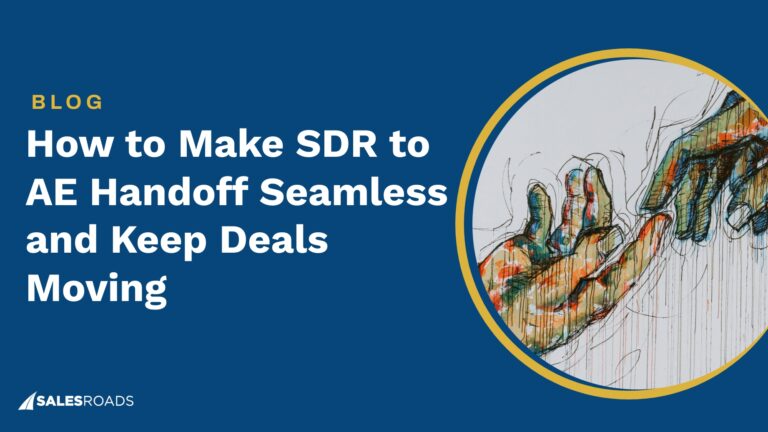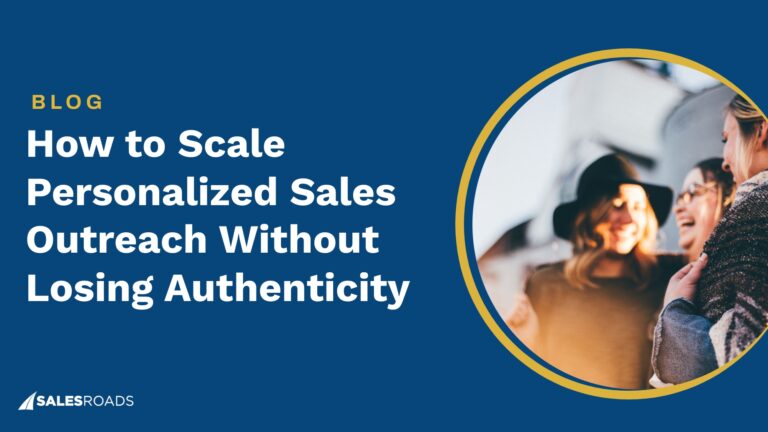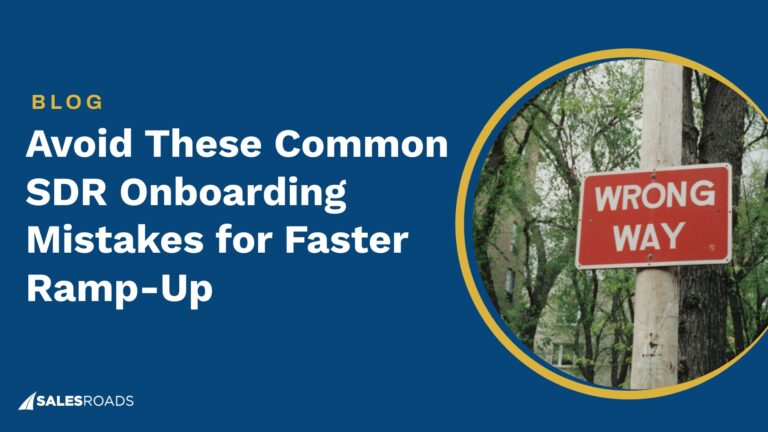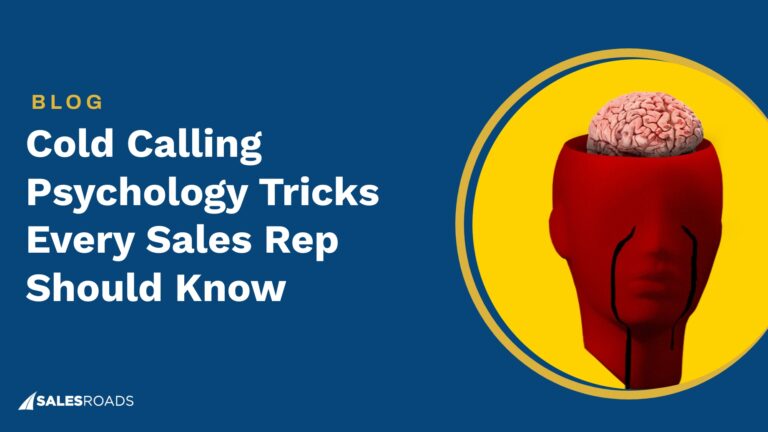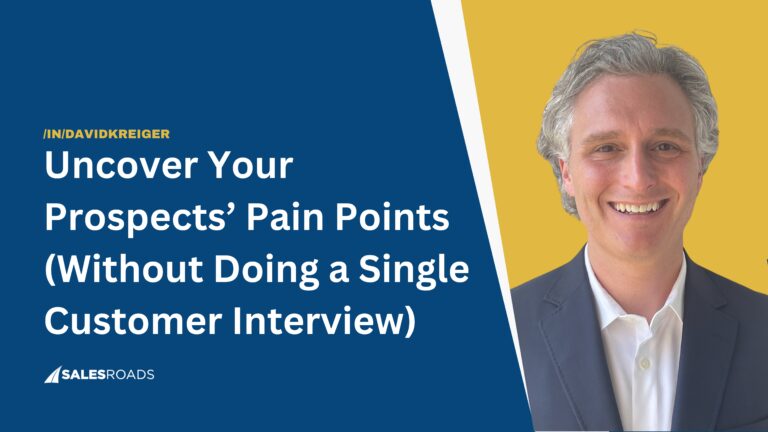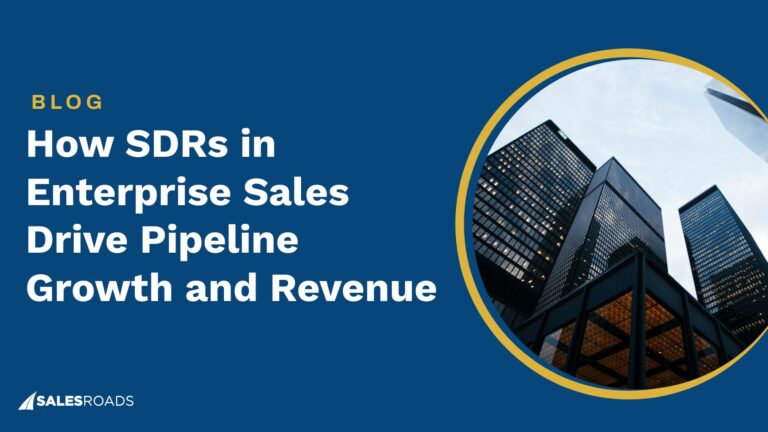Sell Like A Leader – Episode 11
In this episode, we dive into:
– Scaling global remote sales teams: Maintaining a consistent experience for both customers and employees across a large international remote-first team, diversifying the team to reflect a growing diverse customer base and create a balanced and inclusive organizational culture, how to foster idea generation and feedback at all levels, gathering and acting on “wacky ideas,” building strong interpersonal bonds within a remote-first team, implementing regular QBR meetings, and why training and development should be priorities for rapidly growing organizations.
– Rapid Fire Q&A
About Stevie Case
David Kreiger chats with Stevie “KillCreek” Case, who started her 20+ year tech career accidentally as the world’s first female pro gamer; she has led sales teams and revenue organizations at 0 to 1 startups and big brands, including Visa and Twilio. Currently, she is the CRO of Vanta, an extremely fast-growing company helping SaaS automate their compliance, where she leads all go-to-market efforts. Stevie is also a Founding Partner in a new $5M fund called 20SALES with seven other female GTM leaders from leading SaaS standouts.
Podcast Key Takeaways
- Stevie underscores the importance of diversifying the customer base and the team, and enabling business units while striking a balance between independence and alignment.
- Building a thriving remote-first culture requires intentionality. She invests in fostering interpersonal bonds through information-sharing channels, celebrating milestones, and hosting events like holiday parties and QBRs.
- Stevie highlights the significance of creating a culture where individuals feel empowered and own their outcomes, with a strong focus on metrics visibility and regular performance evaluations.
Connects
Connect with Stevie Case: https://www.linkedin.com/in/steviecase/
Connect with David Kreiger: https://www.linkedin.com/in/davidkreiger
Subscribe to the podcast and follow our Podcast LinkedIn page so you don’t miss any episodes!
Transcript
David: This is the Sell Like a Leader podcast, the podcast for revenue leaders who are on a mission to cultivate high-performing sales teams within their organization. I'm your host, David Kreiger, founder of SalesRoads, America's most trusted sales outsourcing team.
An appointment setting firm. And we are bringing you an amazing sales leader today, Stevie, quote, unquote, Kill Creek Case, who started her tech career accidentally, I think, Stevie, as the world's first female pro gamer. Is that right?
Stevie: That is correct. That is correct. I had no idea that is what it was when I was beginning, but that's how I started. And here I am, many years later.
David: So, from Kill Creek, you had started a 20-plus-year sales career. Starting as an AE, growing into a vice president of some of [00:01:00] the companies you might've heard of like Twilio, so really helping grow just world-class organizations. And currently is the CRO of Vanta, which, if you haven't heard it, it's just an extremely fast-growing company that helps SaaS companies automate their compliance rates.
A really big Series B, I think, last year or two years ago now. And it just is really conquering the complexity of compliance for SaaS companies. And she leads all of the go-to-market efforts, including sales, customer success, revenue operations, and growth marketing.
And if that's not enough, she is also the founding partner of a new 5 million fund called 20SALES, along with seven other female go-to-market leaders from leading SaaS companies across the world. Stevie, you are very busy, so I appreciate you carving out some time to talk to us and sharing some of the wisdom that you have of growing sales teams.
So, thanks for joining us here.
Stevie: It's my pleasure to be here. I love to talk about this [00:02:00] stuff. It's not just my job. It's also my passion. So excited to be here with you. Absolutely.
David: We are as well. So today, what we'd love to jump into is talking about some of the challenges that you've seen throughout your 20-year sales career of scaling and leading, specifically global, remote, and multicultural sales teams. So there's a lot in there, right? A lot of people talk about scaling sales teams, but there are a lot of nuances in the world that we live in right now, that we have a lot of people who are work sales leaders who are trying to figure out how do you scale a remote organization, right?
And there's unique challenges. How do you scale a global multicultural organization as we find talent across the globe? And so I'd love to dive into that as we go, but I'd love to just start high-level. If you can tell folks out there who aren't familiar with Vanta, a little bit about Vanta, and specifically what is the makeup of your team?
Stevie: So Vanta is a Series B growth [00:03:00] stage company. We are in the business of trust management. So if you're in SaaS, you have probably heard our early tagline, which was compliance that doesn't suck too much. We are very much known for helping SaaS companies get compliant with frameworks like SOC 2 and beyond.
We have grown since then tremendously and really now we're a platform that helps any business of any size make it much easier to build and prove security, compliance, and ultimately trust with their customers.
So that looks like vendor risks, risk management, proving trust through trust centers, and it does still very much look like helping our customers through all of those gnarly audit processes from SOC 2 to frameworks like ISO 27001, and one we're really excited about now, which is AI. Everybody is [00:04:00] really excited a bit about AI, but also cautious, wanting to make sure they're leveraging it responsibly.
We support standards like ISO 42001, which is a great risk management framework for AI. So that's Vanta in a nutshell. We are a roughly 500-person company. So we are quite large for our stage of growth.
We have the benefit of an incredible product with product market fit that lots of companies want. I do run the go-to-market team. I've got a very large global organization now that is about half of the company. So on the order of about 250 people. We are by and large a direct sales force today. So we've got sellers all over the world, typically in most locations, remote first.
We do have offices in San Francisco, New York, Dublin, and Sydney today. And those are rapidly growing. We've got a rapidly growing indirect motion in [00:05:00] the channel business as well, where we work with managed service providers who are both leveraging Vanta and leveraging it publicly on behalf of their portfolio of clients.
We work with auditors. We work with all sorts of partners in the ecosystem to really power compliance and security for folks. We've got a customer success organization and account management function. And because we started with smaller customers, we are a very operationally focused organization as well.
So, RevOps is at the heart of everything we do. Data is at the heart of everything we do. And we've bit by bit been growing upmarket. We now serve some of the largest enterprises out there as well. So rapidly growing and changing organization with people all over the world.
David: Wow. One of the things that it seems like you're focused on, which I think is a beautiful word is harmonizing, right? The global team as well as the offerings to your clients. [00:06:00] Because as you said, you started with a certain offering to SaaS companies, but you found that the market fit is even broader than that.
And you're responsible both for finding those clients, but then delivering at a very high level. Over the time you've been where you're having to both scale a team while maintaining a high level of service, while making sure that your team is operating at a high level of service across the world, not in very many centralized locations with global and remote folks, what are some of the unique challenges you've had in driving that over the past few years while keeping harmony, keeping a consistent experience for both your customers, but your employees as well?
Stevie: Yeah. It's a really interesting challenge, and it's a delicate dance. We have this incredibly successful, fast growing business with clear product market fit. So when I arrived at Vanta, that was very much the case. And what we have had to do is start [00:07:00] to diversify the types of customers we serve, which also means diversifying our team.
And as you do that, there are a number of challenges you face. And honestly, success can be one of those challenges. It's a little counterintuitive, but when you have a very successful core business, it can really start to eat all of the energy in the room, all of the energy from the team that you've got on board.
So you've got to find a way to start to create teams that have different mandates, different areas of focus. And as you do that, there's this balance that you have to strike where your newer teams and business units need to have the same North Star and need to understand their goals just as clearly.
They need to learn from the core business, but they need to have a certain sense of independence to be able to go chase a different, newer goal that might look totally different. So you're always going to walk in this line of creating teams that are [00:08:00] working together, that are learning from each other, and that are held accountable in similar ways, but that are enabled to go chase different goals and might have different rules around how they operate that allow them to do what they need to do to build what looks like almost a new business inside your business.
So a lot of the mission of my two years at Vanta to date has been creating those different types of units, which I think of as engines in the business, and standing them up in a way that they can become independent and operate, but they still are within the broader container that is the company. So that delicate balance is one that can be really hard to achieve.
David: And how do you decide what is core? And what are the things that you want to preserve in each of those units that has both been successful for Vanta as part of your core culture, but at the same time allows for the experimentation that is needed to be able to understand a new dynamic from a new market or a [00:09:00] new product or service?
Stevie: Yeah, a lot of this comes down to a structured inspection of the business on a regular basis. And we do that as a go-to-market leadership team. We just ran a quarterly business review, a QBR, last week with our team. This is something that I have found to just be an incredibly helpful practice. We've got a remote team, and something does happen differently when you bring them together in person.
So I started a year ago this practice of QBRs where we bring all of our managers together, we sit in a room, and each person stands up and presents the state of their business. And the intent is to have this be an open conversation. So you do want to celebrate the wins, but you equally want to start to talk about some of the patterns in the business of things that are both working and not working.
And the conversation that evolves in that room is often the conversation that leads to the answers to the question you're asking. So you get all of your leaders [00:10:00] together, they start to talk about what are these patterns? Is there something happening in a different segment within our customer base that's like a repeatable success pattern that is notably different than what's happening in the core?
And what's the opportunity there? Can we double down on it? How would we tackle it as a team? And every time we run one of these events, we find at least one major opportunity where you might have dozens of people that have seen the same thing in customer conversations, but when you get everybody in a room and you talk about it, suddenly the light bulb goes off.
And then from that, we take and create an initiative related to those patterns we've identified. And often we're able to get incredible results that move the metrics out of those moments. So I think about it a little bit like a self-healing machine in that you want everybody out there executing, but you've got to come back together, measure, observe, and then act on those patterns on a regular basis.
If you can do that, you can conquer [00:11:00] anything.
David: And obviously I run a much smaller organization, so we're about 75 individuals, but one of the things we have found as we try to innovate or try to understand what's working or what's not working or new things that we want to roll out for our clients or new strategies from a prospecting standpoint is to do what you're doing.
We don't necessarily do QBRs, which I think we should do, but I try to go directly to everyone within the organization, especially frontline folks, the SDRs on our team, to understand what's working, what's not working, get their ideas. Because as you're trying to innovate and see what's working or not working, if you do it in a little bubble amongst senior leadership, a lot of times we don't have the information to be able to make the right decisions.
And we all often are missing out on the breadth of different ideas if we go broader. And so, you know, one of the things I do — lunches with David. So I try to structure lunches with all the folks, [00:12:00] managers, non-managers, on a regular basis so that I can go to the source and get feedback and understand what's working, what's not working.
That philosophy is huge in driving growth.
Stevie: I love that practice. I think there are so many ways you can operationalize that, too. We, for the first time, just ran this QBR exercise with the entire field this last time. And what we asked them to do is present, for accountability, their plan and how they're going to hit their targets, and what they're going to work on.
We also asked them to present ideas for the business. So the last slide in their QBR deck was, what are you seeing? What do you think we should be doing? What are some programs we should offer that we don't offer? And there were some really great ideas that came out of that. Some creative product ideas, there were packaging ideas, there were services offerings, and it was really cool to get everybody to take a step back and think like an owner of the business and propose some of that.
We've also found success as a remote team in Slack [00:13:00] doing this. We all work in Slack. We live in it all day. We have a couple of different channels that are wacky ideas channels, and anyone can go into this channel and submit an idea. And often they're like small optimizations, and there are things that are like, oh, it fixes a problem for us or for the customer.
But it just took somebody who's closer to the problem articulating it to make it happen. So tons of great ideas come out of those wacky ideas and people act on them very quickly. So we're finding that's a really quick way to iterate on great ideas from folks who are out there day-to-day, talking directly to our customers.
David: So, a few things that I'm hearing that you're doing — first, allowing folks to be able to present ideas on the business.
There's a lot of companies that don't allow people to think that way, unless they're in senior leadership. So even if in that QBR, in the last deck of the presentation, there weren't that many good ideas this time, it sends a message to them and to everybody that your ideas are important.
And then [00:14:00] throughout their day-to-day over the next week, month, they're thinking that way and knowing that they should be thinking through that prism.
And that's when even better ideas can sometimes come up because they realize that they're going to be able to contribute. And then the Slack channel, which I'm going to implement tomorrow — I love the wacky ideas. I love that it's named wacky ideas because a lot of times people get bashful. "I have to have the perfect idea. It has to be ready to go to market." It's gotta be, you know what?
Just zany ideas that maybe are even half-baked. And those ones you iterate on and you figure it out, or maybe they're just not that good, but it's okay because it's a wacky idea and you can just be creative.
And so I really appreciate the culture that you're creating and can see how you're able to get different ideas, experiment while creating, you know, having a consistent culture and structure around what you're doing in each of these different areas.
Stevie: Yeah, I want the folks on my team to feel like they are GMs of their own business. I want them to have a sense of ownership in the outcomes. And I really [00:15:00] encourage my team to always feel like the organization is flat. It is completely accessible to you. Act like you could make anything happen here because, realistically, you can.
If you've got a great idea, we'll build it. So that openness, I think, leads people to understand that they're in command of their own destiny. They can be in charge of their own outcomes, and we want them to feel that sense of agency within the business.
David: You're creating that culture. And then, how, at a higher level, are you able to monitor — are there certain KPIs to see whether the different divisions are going in the right direction?
What are the things that you like to look at on a day-to-day, week-to-week, quarter-to-quarter basis?
Stevie: Yeah, so I run a very tight cadence with my team, and I view this as the central thing that I can do week to week to make sure that we're not just performing, but we're improving. My forecast cadence is built to inspect all those key areas of the business. And it's evolved over time.
It [00:16:00] has to evolve with the complexity of your business. So at this point in time, I'm running a new business weekly basis. I'm also running a post-sales forecast on a weekly basis, and we've also now instituted a pipeline review meeting that is biweekly, where we're inspecting pipeline.
The audience for each of those matters, and ultimately that's for every leader of every important part of the business to show up weekly, report their results to date and then commit to a forecast going forward. I also use it as a chance to inspect what's going well, what's not going well, identify opportunities for us to improve. We take action items away — maybe it's a SPF, maybe it's a program, maybe it's something we need to troubleshoot or look into — but ultimately, that's what drives our improvement week over week. And it just increases that accountability.
And ultimately, it gives everybody the chance to see that we're all being held to the same standards. Everybody's [00:17:00] being measured by similar metrics. We've got the same North Star of trying to grow revenue together. And that's our moment to come together and have that shared accountability.
David: And how do you share those metrics? Are they visible to everyone on the team, and then they're going over them with their team? What's the visibility and communication around the metrics over and above the weekly or biweekly meetings?
Stevie: I believe in very high visibility. I think everybody should be able to see these metrics at any given time. So we've invested in lots of infrastructure such that everybody on the team has access to all the core metrics. They can go into our forecast deck, they can go into our systems that we use.
So we use Clari, we use Tableau, we use a lot of systems to be able to report out all that data. So we run it in a once-weekly call. They've got access to the tooling to see it. And what I expect is that at each layer of my organization, they are running their own similar cadence all the way down to the [00:18:00] field.
So everybody on the team should be experiencing a version of this. And then we run the business on a monthly cadence today, which is — I know a lot of businesses out there do not run monthly. We are on a monthly. I think it's really good and healthy. It keeps us on our toes. And on a monthly basis, I'm then reporting out to the team along with my leaders how we performed versus both our targets and our forecast.
And then we're giving them the sort of the highs and lows of what we perceive in the business. So I think that level of transparency is critical. If you're going to hold people accountable and you want them to be owners, GMs, you got to arm them with a greater understanding.
I think uh, a couple of All Hands ago, we had a new team member and she gave the highest compliment I could possibly imagine, which is we ran the All Hands her first week and she said, I feel like I just got an MBA in this business by attending this All Hands.
And that's the goal. I want people to understand what's going on. It's going well, what's not going well, so we can all take action on it.
David: You've got a global [00:19:00] team, you've got 250 folks, remote first. And so how do you nurture that level of collaboration as they're spread across the world. You've got the QBRs, you've got this Slack channel. Are there any other aspects as sales leaders who are listening to this are trying to understand in a remote world, how to make sure that there is seamless communication, things aren't getting lost?
Salespeople are learning from each other, even if they're sitting in their home office. What are some of the best practices or strategies you've found have been successful in driving that level of communication across your teams?
Stevie: Yeah, it's an ongoing challenge. It remote first is challenging. I think Vanta is a real counterpoint to the narrative there in that we're a hyper-growth company that is thriving as a remote-first company. But we are constantly investing in these mechanisms, and I think probably the most [00:20:00] important of those is getting really intentional about how you build culture.
Because what you miss when you don't have folks in an office together, you don't have the hallway conversations, you don't have the relationship building sort of might get into these intentionally scheduled Zoom meetings and they can feel very structured and you skip a lot of the personal stuff 'cause it's just like you're running meeting to meeting.
So we work really hard, all the way down to the individual frontline leader level to drive culture building and drive like interpersonal bond building, because that's the stuff that ultimately leads people to feel connected to work.
So we've got a couple of great channels, our sales squad channel, probably being the best among them, where we do information sharing there, but there's also just a huge amount of celebrating people, celebrating milestones, celebrating accomplishments, sharing wins, and we have found that to be just incredibly helpful.
We are also trying to find [00:21:00] this right balance of bringing people together for in-person events. We do in-person holiday party typically every year.
We're doing these QBRs and we're finding that if you can get people face to face a little bit goes a long way if you're thoughtful about it and you really don't just make it all about the work, but also make it about the humans.
We do a company kickoff in person every year. We found that to be incredibly valuable as well. So it's this like a weaving together of the remote experience with thoughtful online engagement, plus a little bit of in-person.
David: And I think the intentionality is the real important thing. And you've got to realize that if you do have a remote-first culture, you've got to lean into it. You've got to think about it. You got to really figure out the best way to deliver on it. Because if you just like set it and forget it, it's not going to work. You can build those types of relationships. But as you said, I do agree. It's got to be intentional.
Stevie: Yeah, it really does take that time invested. And we [00:22:00] do a little bit of the same, that investing in starting with sort of the personal and the individual recognition and spending the time. And it really does build those bonds. I think you would hear from a lot of Vantans that they've made best friends in this group.
And often they're in totally different states, different countries, but they've managed to become very close.
David: Yeah it's special. I think and we actually had during COVID, we had one individual who was in, I think, Virginia, some metropolitan area in Virginia, and somebody was in a rural area of Arkansas. And in Virginia, they couldn't get toilet paper. Um, remember those days? And this person in a rural area of Arkansas, there was a Walmart that was fully stocked with toilet paper.
They never met. They've been friends and she shipped the person in Virginia toilet paper.
Stevie: My God. That's great.
David: So I want to ask one last question, then we have a rapid fire question area, but one of the things I think is really important, I think folks who listen to this podcast, as [00:23:00] they are challenged with running remote teams, but also even in-person teams is would love to get your take, leading a rapidly growing organization to training and development and how do you guys look at that, what is the infrastructure for training your philosophy around training and how do you guys deliver that to your teams?
Stevie: It's an area of huge investment for us. We consider ourselves a learning machine at this point. We are thinking about this not just as programming and collateral that we're delivering to the team, but we are also really optimizing and who we're hiring, for people that are learners. Because we're very fast moving, because we're remote, you really got to be thoughtful about hiring people that are going to be willing to own their own outcomes and own their own learning.
So that growth mindset and a willingness to engage is half of the equation. We also have an incredible enablement team. So I have an enablement [00:24:00] leader, Tara Sullivan, who has done a full, phenomenal job building a program here, and it is forever evolving. So we're shipping new products, all the teams. So she's got to train the team on new products.
We've got an entire infrastructure built around how that gets delivered. And we've evolved from just delivering sort of training at the time of launch to something that's much more thoughtful and just in time and evolves over the course of the launch of a product, we're onboarding people all the time, we are adding people.
We're adding products that add more details to the products that already exist. And it means we've got to have really a living curriculum that isn't just delivered at one point, but starts there and evolves into something much greater. We've also gone really deep on value selling. So we have evolved from a more transactional selling model to a value-based framework. And that has to be something where there's high accountability for the team to show up.
There's [00:25:00] practice. There is more than just we're delivering training to you. It's full engagement from the field. There's certification. It is like an all-hands-on-deck expectation that we learn these new methodologies.
So something that we found to be key and is very much a living, breathing part of how we operate the organization day to day.
David: A lot of times, people don't realize how much effort and time it takes to develop training, to iterate training, it's not anything you can set and forget. It goes pretty stale. And so a lot of times people are feeling like my go-to-market isn't working.
I've hired some great people and dive into how they're training them and setting them up for success. And that just isn't there. That, that's great. Stevie, what I would love to do, the way we end the podcast is we like to do what we call rapid fire questions. So I've got a few questions for you, if that's okay.
And I'm just going to throw them out there, and we'd love to get your perspective on each of them. Does that sound okay?
Stevie: Let's go.
David: All right. So what is the one thing that people don't give enough value or attention to in [00:26:00] leadership?
Stevie: Oh, I think it's like underlying human motivation. Why are people there? It's true in selling, but it's just true in leadership and management as well. Like the why behind why people show up? Why are we having this conversation? What motivates it? I feel like we skip that all too often and it can be so key to unlocking people's potential.
David: That's the first time I've heard that. And that's so critical. What is the one skill you advise everyone in sales to master?
Stevie: Discovery. Doesn't matter who you are. What level you're at? You're an executive on down to the field. Discovery is the single most important skill, and it is never a binary thing. You're never done learning to get good at discovery. It is an art form, and I think it is the most important thing that anybody in any role can invest in.
David: What's your favorite business leadership or sales book?
Stevie: Oh, it's a classic, but I really love The Challenger Sale. There's something very clean about [00:27:00] the idea of resetting the narrative for your prospect and coming with a really well-informed point of view. I just love that—the concepts and ideas behind it.
David: What's your favorite quote, mantra, or saying that inspires you as a sales leader?
Stevie: Oh my gosh. So we had one come out of our QBR last week attributable to, I believe, someone on my team that I just absolutely loved because it sums up the way I try to operate, and that is: less ego, more execution.
David: Perfect.
And I love that you quoted someone on your team. I think the last one I got was from Gandhi, so I love that you're bringing it back to your team. And lastly, what is the most important goal or project you are working on right now?
Stevie: My goodness. So at any given time, I would say my most important project is thinking about how we double the business a year from now. And that means I have to diversify revenue sources and continue to create new groups in my organization [00:28:00] that can operate independently, learn, and go conquer something new.
So it is just truly that spirit of building new resilient teams within my organization, so they can go learn a new area, learn a new product, and take it to market, really without any additional support from elsewhere, making us all bigger and better.
David: Awesome. Stevie, thank you so much for joining us on Sell Like a Leader podcast. You are an amazing, dynamic leader. I love your philosophy, and I personally got so much out of today's episode. How can people connect with you online or learn more about Vanta?
Stevie: Yeah, so I'm on LinkedIn. I post all the time. I'd love to engage in conversation there. So, Stevie Case on LinkedIn is a great place to find me. Vanta.com, you can always hit us up there. We would love to talk to you.
David: Fantastic. Thank you all for listening to another episode of Sell Like a Leader podcast. Don't forget to subscribe on your platform of choice. And I'd love to hear from you guys with any feedback. You can always hit me up on LinkedIn. [00:29:00] Love to hear what you'd like to hear. Any sales leaders you'd like to hear from.
Stevie, thank you again so much. Really appreciate the time today.


